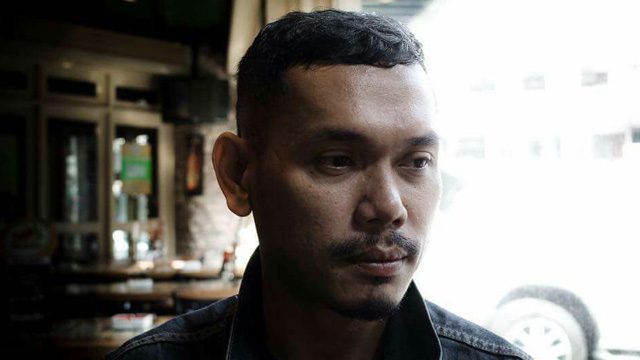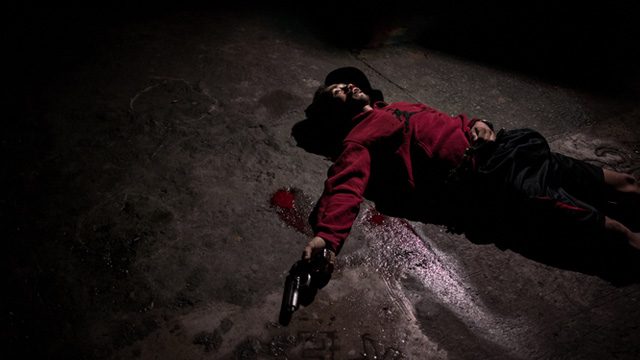SUMMARY
This is AI generated summarization, which may have errors. For context, always refer to the full article.

MANILA, Philippines – Artist and photographer Carlo Gabuco, who is behind the powerful photos in Rappler’s Impunity series on the Philippines’ war on drugs, is one of 10 grantees for 2017 of the Magnum Foundation Fund, a program to expand creativity and diversity in documentary photography.
Gabuco’s project for this grant, titled “Less Than Human,” chronicles President Rodrigo Duterte’s brutal drug war in the Philippines as seen through the eyes of affected children.
Below is the press release from the Magnum Foundation Fund:
In collaboration with the Prince Claus Fund, the Magnum Foundation Fund provides production grants, project development support and mentorship to both emerging and experienced practitioners.
Grantees were selected by an independent editorial committee from 120 photographers nominated by 27 international editors, curators, and educators. This year, we welcomed a new jury comprised of Thomas Keenan, Director of the Human Rights Project and Associate Professor of Comparative Literature at Bard College; Danielle Jackson, writer, educator, and Co-Founder of the Bronx Documentary Center; and Marisa Mazria Katz, Director of Media Initiatives at Creative Time.
Ten projects across nine different countries were chosen. They are:
- “State Business: Chapter IV” by Mari Bastashevski addresses the expansion of private military contractors and the intersection with foreign aid in the horn of Africa.
- “The Last Yugoslavs” by Marko Drobnjakovic explores the dissolution of multiethnic societies and the challenge of preserving individual and collective memory.
- “ Less Than Human” in the Philippines by Carlo Gabuco chronicles President Rodrigo Duterte’s brutal drug war as seen through the eyes of affected children.
- “Foreigner: I Peri N’Tera” by Daniel Castro Garcia documents the experiences of unaccompanied minors migrating to Italy.
- “Expansión” by Eduardo Hirose explores societal dependence on illegal and informal gold mining in Peru.
- “Left Behind” by Nneka Iwunna examines widowhood across various ethnicities in Nigerian society.
- “Esther C.” by Mimi Cherono Ng’ok reenacts the life and disappearance of a Kenyan student in Kampala, Uganda, a case that remains unsolved.
- “Open Mourning” by Musuk Nolte d ocuments investigations of Peru’s 15,000 missing people cases and the processes of exhumation, delivery, and burial of found bodies.
- “El Deslinde” by Alessandra Sanguinetti expands on the twenty-year long project “T he adventures of guille & belinda,” with a particular focus on the socioeconomic conditions of the Argentine countryside.
- “Tea Workers of Bangladesh” by Faiham Ebna Sharif highlights the plights of plantation workers bearing the colonial legacy of marginalization and oppression.

“From death squads in the Philippines to tea plantations in Bangladesh, the characters and stories documented by this group of adventurous and optimistic award-winners shocked and encouraged me. As they do their work over the coming year, I’m certain they’ll grab our attention – and get us involved,” said Thomas Keenan.
The Fund places emphasis on photographers working within their home region or community. Of this year’s ten grantees, seven are working within their home countries. “The amount of work being produced by people who are working in their home countries, especially various African and South American nations, made me hopeful and invigorated for the future of documentary practice,” said Danielle Jackson.
She added, “I congratulate, too, those working locally at the risk of peril to themselves and their families. Facing a large number of very thoughtful, high quality projects to review, it was sobering to consider the importance of grant monies such as the Magnum Foundation Fund amid the decline of so many other avenues for publication and funding that is available to photographers.”
Representing a range of styles and approaches, the selected projects each demonstrate a commitment to social issues and a curiosity for exploring new models of storytelling. Marisa Mazria Katz remarked: “ I was in awe of the work of the applicants to this year’s Magnum Foundation Fund. Each and every one has dedicated their practice to issues that affect people around the world.”
The 2017 Magnum Foundation Fund grantees will work on their proposed projects over the coming months and submit completed work in the late fall of 2017. – Rappler.com
Add a comment
How does this make you feel?
There are no comments yet. Add your comment to start the conversation.